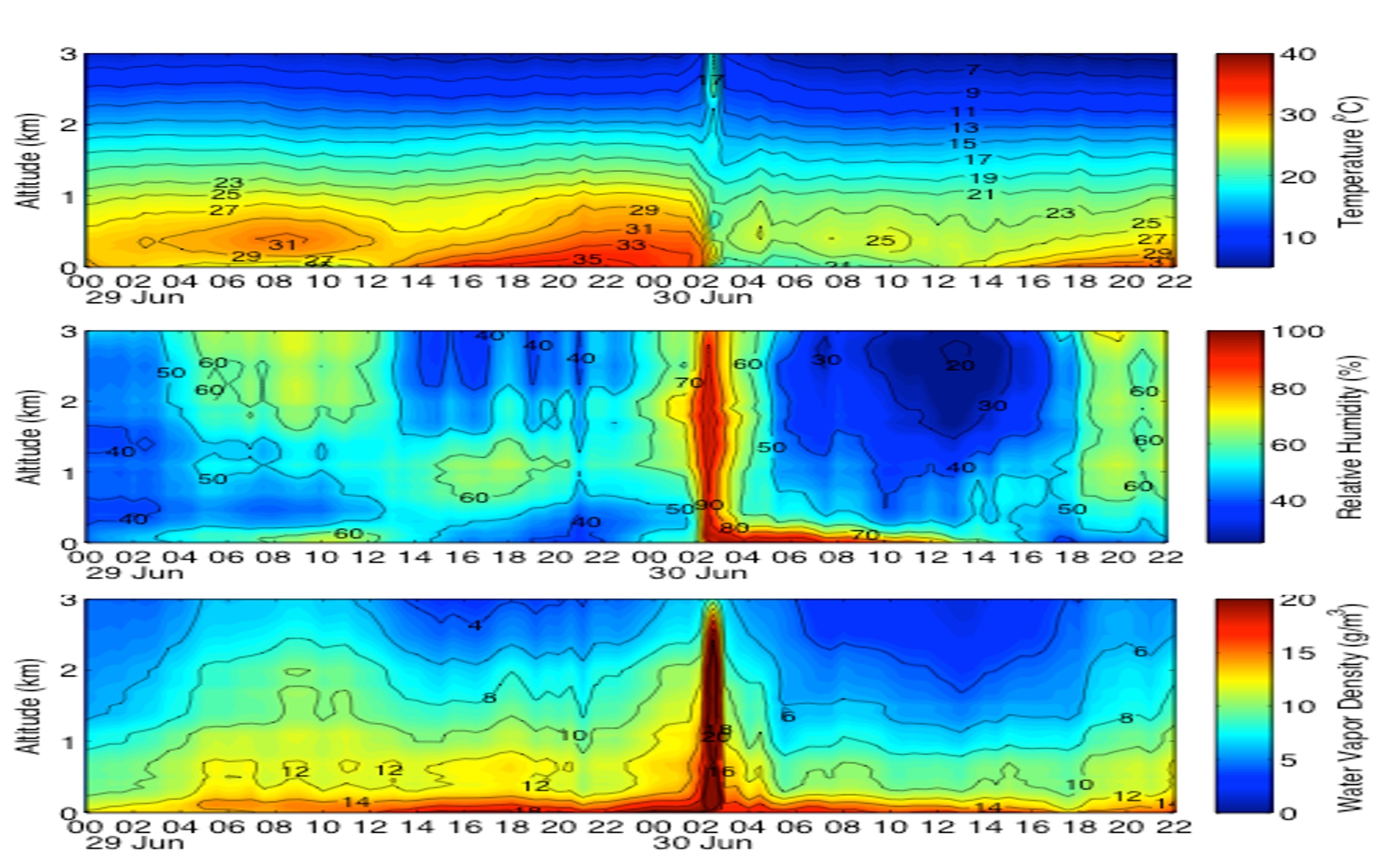Upper Air Measurements
GRUAN Certified Radiosonde Operation
HUBC is the only university operated certified site in the Global Climate Observing System (GCOS) Reference Upper-Air Network (GRUAN): an international reference observing network of sites measuring essential climate variables above Earth’s surface, designed to fill an important gap in the current global observing system. We have the capabilities to launch different types of radiosonde sensors (InterMet, Vaisala, Cryogenic Frost Point Hygrometer, and others) and international collaborations of using these data set for satellite validation and climate processes studies. Radiosonde operation and training is also a central excellence at HUBC.

Ozone Sonde
We have been operating Ozone sounding since early 2005. HUBC launches intensive ozone sounding in the summer in collaboration with the collaboration of Maryland Department of Environment (MDE) for air quality and pollution monitoring. We have also served as a super-site for many of NASA and NOAA as well as MDE field experiments. We have a strong collaboration with NWS, NASA, and NOAA on radio sounding

MicroWave Radiometer (MWR)
HUBC operates passive remote sensing radiometers to monitor continuous thermodynamic evolution of the troposphere. The MWR profilers measure downwelling atmospheric thermal emission from water vapor, cloud liquid water, and oxygen at frequencies ranging from 20 to 60 GHz.

Ceilometer
HUBC has extensive experience with lidars in general and ceilometer in particular. We led the NOAA ASOS Ceilometer study – a recommendation on how to archive and distribute aerosol backscatter profile and cloud statistics capability of the more than 1000 ceilometers that are operating nationwide. We have collaboratively advice the nation in the design of ground-based profiling networks and have deployed and operated a limited network of ceilometer instruments.

